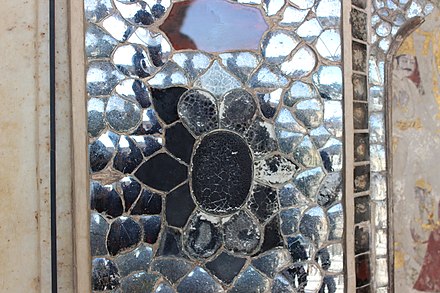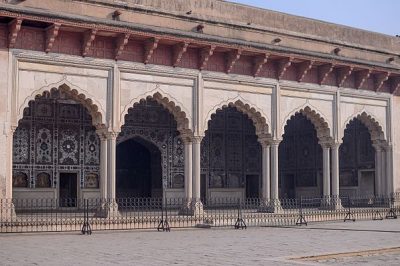Sheesh Mahal, literally meaning “Crystal Palace” in Urdu, is an exquisite palace situated within the Shah Burj block in the northwestern corner of Lahore Fort. Constructed during the reign of Mughal Emperor Shah Jahan between 1631 and 1632, this ornate pavilion stands as a testament to the grandeur and artistic finesse of Mughal architecture. The palace is renowned for its lavish use of white marble, intricately inlaid with pietra dura — a technique involving finely cut and polished colored stones — and an elaborate mirror-work of exceptional quality. This mirror-work decor, which covers the walls and ceilings, creates a dazzling gleam that earned the Sheesh Mahal its popular name, the “Palace of Mirrors,” or sometimes the “Hall of Mirrors.”

The foundations of Lahore Fort date back to 1566 under Emperor Akbar the Great, who replaced an earlier mud fort with a solid brick structure, enlisting skilled artisans from the recently completed Fatehpur Sikri. Later, Shah Jahan transformed the fort into a luxurious pleasure resort, adding several iconic structures including the Diwan-i-Khas, Moti Masjid, Naulakha Pavilion, sleeping chambers, and the Sheesh Mahal. The palace lies within the Shah Burj, or King’s Pavilion, originally built by Jahangir, Shah Jahan’s predecessor. The Sheesh Mahal’s Hall was reserved strictly for the imperial family’s private use, hosting confidential council meetings attended only by the emperor, princes, the vizier, and select courtiers, emphasizing its exclusivity.

The Shah Jahani architectural style is clearly reflected in the palace’s extensive use of white marble and the hierarchical design elements, a hallmark of the period between 1628 and 1634 when Shah Jahan expanded the fort’s private quarters. During the Sikh era, Maharaja Ranjit Singh made the Shah Burj his favorite retreat. He added a harem above the Sheesh Mahal and adorned the walls with Kangra-style frescoes. Additionally, the original entrance to the Sheesh Mahal quadrangle was sealed, and the Athdara pavilion constructed in its place. It was within this complex that Ranjit Singh famously displayed the legendary Koh-i-Noor diamond, one of his most prized possessions.
Also Read: From internet cafes to global arenas – The rise of E-Sports in Pakistan
Today, Sheesh Mahal remains a jewel within the Lahore Fort, one of the 21 monumental constructions by successive Mughal emperors inside the fort complex. The Lahore Fort itself is a UNESCO World Heritage Site, inscribed in 1981 in recognition of its outstanding cultural and historical significance. The palace’s intricate mirror-work and pietra dura craftsmanship not only highlight the artistic achievements of the Mughal era but also serve as a shining symbol of Pakistan’s rich architectural heritage.







